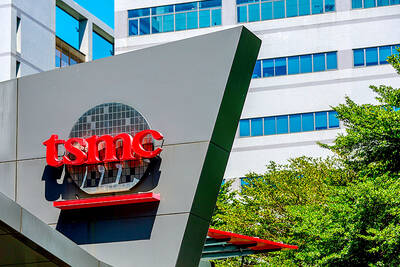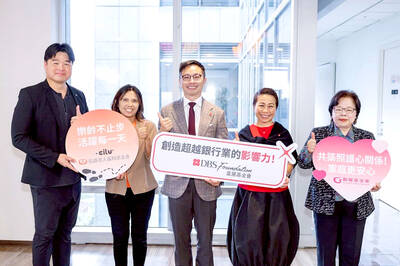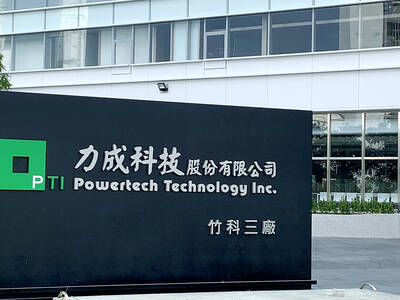You know times have changed when French wines, bruised by competition from the “New World,” fight back with the upstarts’ own weapon — dropping complex regional labeling for the plain old grape name.
Even the staunchest of Gallic wine lovers now order chardonnay or cabernet sauvignon instead of, say, their favorite Chablis or Bordeaux.
The change concerns everyday wines, notably those bound for export.
Labels on better varieties, grand cru and AOC or “controlled designation of origin” wines will carry on in time-honored fashion.
But it’s a jolt in a country where regional identity remains strong (are you from Brittany? Provence?), where the term terroir — soil — is an agricultural mark of pride and where wines can be declined down to the hillside where the grapes grew.
CONSISTENCY
The strategy? Market recognition, consistent taste.
“It’s like creating a well-known brand name, like Apple or Coca-Cola,” said Valerie Pajotin, director of Anivin, a trade organization formed last year to promote Vin de France, the new denomination that has replaced the old vin de table, or table wine, a term that carried a negative connotation of low quality.
The goal? Winning back ground from “New World” competitors, notably Californian and Australian wines that overtook French sales in some key foreign markets like Britain, Germany and the US.
“In one generation, we lost 20 to 30 percent of the share of our principal markets,” said Bertrand Praz, purchasing manager for Grands Chais de France, which bills itself as the leading French exporter of wines and spirts.
Last year alone, exports of French wine tumbled 19 percent to 5.5 billion euros (US$6.7 billion), dropping to levels of a decade ago, according to figures from Ubifrance, the French agency for international business development.
Some critics feel the change could damage local wine traditions, but Praz insists that French growers need “to be more humble and rethink how they work.”
Historically, place has been primordial, even in everyday wines. French producers relied on their reputation for quality and savoir-faire and did not worry about making labels understandable to the uninitiated, he said.
Add to this vintage — good years and bad years — to confuse the choice.
In came “New World” wines, starting several decades ago with the US, Australia, New Zealand and South Africa, and more recently Chile and Argentina, who wooed away clients with user-friendly labels touting the grape name.
GRAPE VARIETY KEY
“You can no longer ignore the fact that grape variety is now the undisputed reference” for consumers trying out wines, Anivin president Rene Moreno said.
The client will ask for a “sauvignon” if he wants a dry white wine or a “chardonnay” if he prefers one that’s full-bodied, he said.
Chris Adams, chief executive of the major Manhattan retailer Sherry Lehmann (SL), said he thought the changes could help French sales in the US.
“It’s been a long time in coming and there is some ground to be made,” he said.
“Newer world varietal wines are starting to lose a bit of traction, and I think what we term ‘French country’ wines here at SL can gain some ground with this move,” he said.
Wine trade sources say the new labeling could also boost domestic sales, notably in supermarket chains and with younger clients.
The new approach was helped by 2008 reforms in the EU wine sector that allowed use of the generic term Vin de France.
“The goal is to simplify French offerings based on a label, a taste, a national origin, with a consistent quality, the way New World countries do,” Moreno said.
The reforms allow producers to mix the same grape variety from different regions to “allow more creativity and to adapt easier to market demands,” said Pajotin, whose Anivin group has an annual 800,000 euro budget.
“This possibility of mixing ensures a consistent quality wanted by the consumer who is expecting the same taste from January 1 to December 31,” she said.
Like Coca-Cola.

Taiwan Semiconductor Manufacturing Co (TSMC, 台積電) has secured three construction permits for its plan to build a state-of-the-art A14 wafer fab in Taichung, and is likely to start construction soon, the Central Taiwan Science Park Bureau said yesterday. Speaking with CNA, Wang Chun-chieh (王俊傑), deputy director general of the science park bureau, said the world’s largest contract chipmaker has received three construction permits — one to build a fab to roll out sophisticated chips, another to build a central utility plant to provide water and electricity for the facility and the other to build three office buildings. With the three permits, TSMC

RUN IT BACK: A succesful first project working with hyperscalers to design chips encouraged MediaTek to start a second project, aiming to hit stride in 2028 MediaTek Inc (聯發科), the world’s biggest smartphone chip supplier, yesterday said it is engaging a second hyperscaler to help design artificial intelligence (AI) accelerators used in data centers following a similar project expected to generate revenue streams soon. The first AI accelerator project is to bring in US$1 billion revenue next year and several billion US dollars more in 2027, MediaTek chief executive officer Rick Tsai (蔡力行) told a virtual investor conference yesterday. The second AI accelerator project is expected to contribute to revenue beginning in 2028, Tsai said. MediaTek yesterday raised its revenue forecast for the global AI accelerator used

The DBS Foundation yesterday announced the launch of two flagship programs, “Silver Motion” and “Happier Caregiver, Healthier Seniors,” in partnership with CCILU Ltd, Hondao Senior Citizens’ Welfare Foundation and the Garden of Hope Foundation to help Taiwan face the challenges of a rapidly aging population. The foundation said it would invest S$4.91 million (US$3.8 million) over three years to foster inclusion and resilience in an aging society. “Aging may bring challenges, but it also brings opportunities. With many Asian markets rapidly becoming super-aged, the DBS Foundation is working with a regional ecosystem of like-minded partners across the private, public and people sectors

BREAKTHROUGH TECH: Powertech expects its fan-out PLP system to become mainstream, saying it can offer three-times greater production throughput Chip packaging service provider Powertech Technology Inc (力成科技) plans to more than double its capital expenditures next year to more than NT$40 billion (US$1.31 billion) as demand for its new panel-level packaging (PLP) technology, primarily used in chips for artificial intelligence (AI) applications, has greatly exceeded what it can supply. A significant portion of the budget, about US$1 billion, would be earmarked for fan-out PLP technology, Powertech told investors yesterday. Its heavy investment in fan-out PLP technology over the past 10 years is expected to bear fruit in 2027 after the technology enters volume production, it said, adding that the tech would